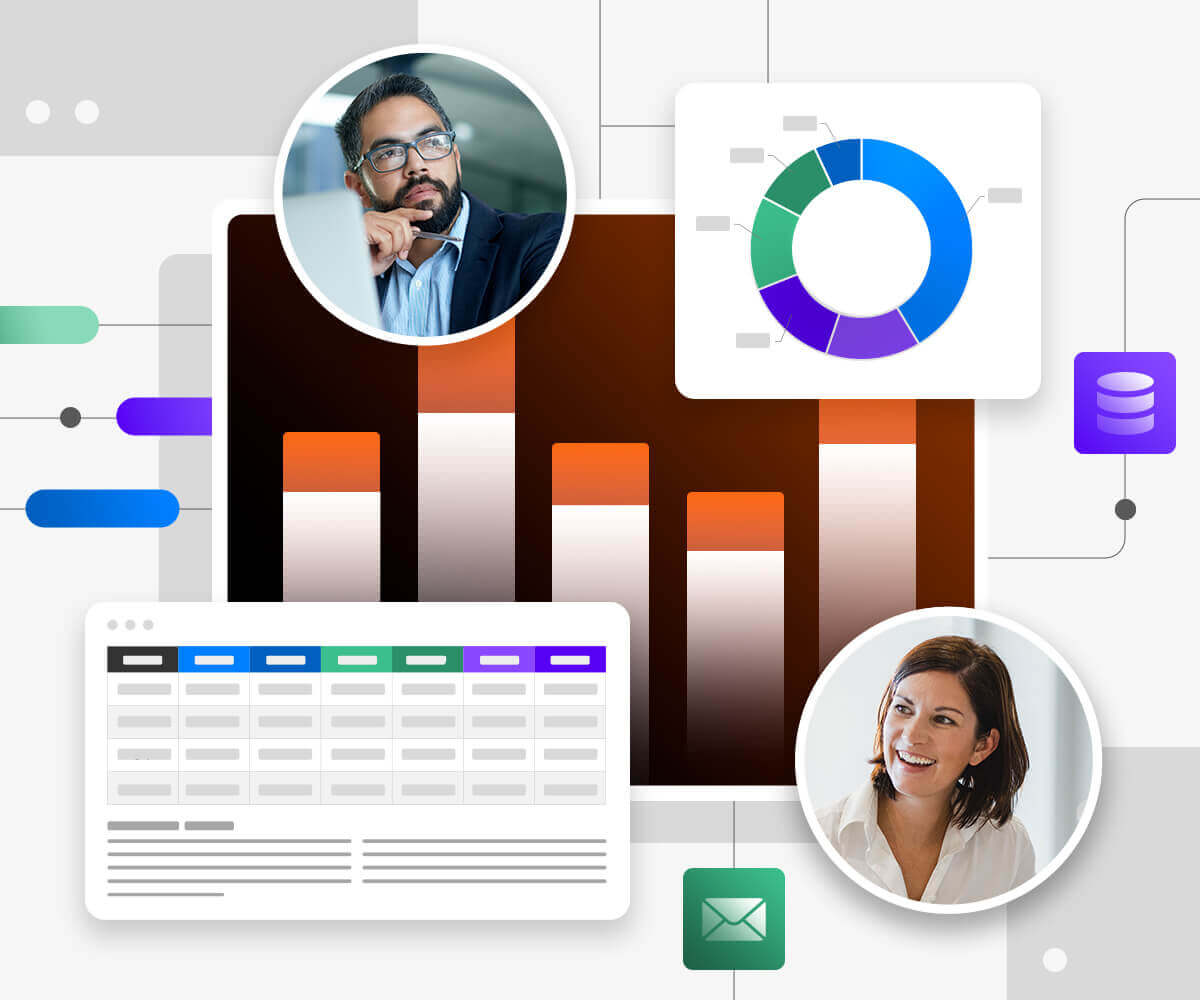Most people don’t immediately think of B2B graphic designs as visually arresting pieces of art. Prior to joining B2B marketing, I used to create posters for music festivals, where expectations focused largely on aesthetics with a huge “wow” factor. In business design, this is true too, but there is also a specific purpose to what you’re creating and it has to support and even enhance the message that’s being conveyed in the copy.
Naturally, transitioning to the B2B landscape proved quite challenging. However, I wasn’t left to cope alone as I had mentors who provided a lot of support that helped me get appointed to the role of senior designer in two years.
When I first started, I had to learn the ins and outs of designing white papers, case studies, and presentation decks. These were things I had never done before joining 2X. Perhaps the most challenging thing I faced in my first few months was learning B2B terms. I remember the first meeting I joined, my teammates were throwing around words like bottom of funnel, marketing qualified leads, and conversion rates—I could barely understand a single word!
But as I found out, I was in good hands here at 2X. You won’t be just another employee—you’re expected to grow and learn new things. The mentor system of pairing a senior staff with a newcomer guided me through my first few months here. The biggest test of how much I’d really learned came when I was asked to take on the responsibility of leading design projects after my mentor left to join her family in another country. I had to fly solo now, so here’s how I approached things to thrive in B2B marketing and at 2X:
Design to “Solve” a Business Problem
Your work as a B2B designer isn’t to make things look pretty—it’s taking on a practical approach to design and applying your design knowledge to the B2B collaterals that you’re working on. At some point, you have to think about your design like you’re solving a business problem!
Take designing a white paper as an example. It’s a piece of thought leadership, so the flow of reading matters. You’ll need to put thought into the way you piece the information together, what you need to highlight, and the images you select. These are just the little things you’ll have to pay attention to, so having a clear understanding of what you’re creating a design for is really important.
Design with a Purpose
The B2B design landscape has been steadily branching out to include different and more contemporary styles for collaterals like social banners, infographics, and other collaterals. But ultimately, a designer still needs to ensure that the design meets its main purpose. This is a principle that applies universally; whether you’re in a B2C agency, an events company, or a B2B firm, each one serves a different goal and purpose.
As a designer, you’ll have to create something that fits the purpose of the collateral. A B2B white paper would have fewer visuals but focuses more on the flow of information. You need to put yourself in the headspace of what design would fit best for the situation. So even though things are changing and you may have more options, more isn’t always good—remember stick to the purpose.
Welcome New Challenges That Come Your Way
In B2B, we value consistency in our approach to maximize brand recognition and familiarity with our audience. For that reason, we apply a design formula that provides a framework for how we customize designs for clients. This has worked really well, and it makes me happy to hear clients raving about our creations and how very on-brand they look.
However, a client once requested something quite different. They showed us an example of the kind of style they wanted to see for the new asset, while still maintaining the brand’s identity. It was quite a challenge for me because the new style they wanted was focused on a lot of vector images and graphic visuals, while the previous template had a straightforward, clean, and simple style. I had to figure out a way to apply the visual elements they wanted while keeping the simplistic style of the brand.
Rather than seeing it as a problem, I decided to have a lot of fun with it, despite it taking me more time than usual. The client ended up loving what we did, and that made me happy to know that my time and effort paid off.
Align to Your Client’s Needs
In an ideal world, we’d be able to deliver on client expectations without needing a lot of back and forth. The faster things get done, the happier the client. When I was given the sole responsibility of managing a client’s design requests on my own, I was determined to ensure that things got done as smoothly as possible. I paid close attention to every detail to ensure that I was on the same page with my client as much as possible. Nothing was too small—from their style of writing to the way they left comments and the way they communicated what they really needed from us. The more I worked with this client, the more I understood them—it was a whole process of being involved and figuring things out. It isn’t something that happens overnight—you’ll just have to pay attention and trust the process.
I am still managing the account today. I feel extremely thankful that 2X placed a lot of trust in me to be able to manage the account on my own, allowing me to grow on a personal and professional level.
Finally, Understand That Everyone’s Growth Is Different
One thing that I’ve learned from mentoring new designers is that everyone’s growth will be different. Some are quick learners who can adapt very quickly to the new design environment. Some will take some time to adjust, and I’d have to explain things to them in greater detail.
Personally, I’ve grown a lot from the person who just wanted to be in the background to someone who’s now willing to step up and face new challenges. That’s because employee growth is a top priority at 2X, and our mentors don’t show us what to do because they have to, but because they want to. To me, this is important, as most companies tend to not offer opportunities like these. We’re not just hired to do what we need to do—we’re provided opportunities to better ourselves at what we do, and it’s a culture that I really appreciate.
Recent posts




